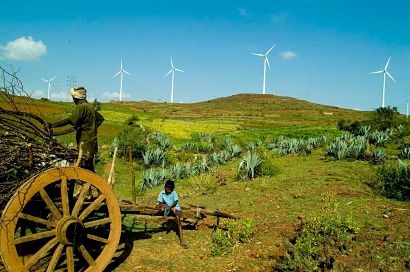
GWEC and MEC+ have launched the third annual edition of “Renewing wind growth to power the energy transition: India Wind Energy Market Outlook 2026”, assessing the wind energy outlook in India and highlights wind energy’s critical link to India’s green energy transition.
“This Outlook is published as the world faces a decisive moment; there is a narrow window of opportunity to halt the irreversible damage to this planet from climate change by making an urgent shift to clean energy” said Ben Backwell, CEO of GWEC. “India can seize this opportunity, but it must kick-start its energy transition after delays due to the pandemic. To seize this enormous opportunity, India must focus on three areas: Dialogue between the central government and the states to foster consensus building; delivery to help match timelines and targets, and the potential for India to be a destination for the global wind manufacturers and suppliers.”
Wind power constituted the majority of the renewable energy mix in India, with 37.7 percent of cumulative installed capacity, as of March 2022. However, the overall estimated potential dwarfs the current installed capacity. There is over 600 GW of onshore capacity at 120 metre hub height, with another 174 GW of fixed-bottom and floating offshore wind potential. These statistics demonstrate that there is a huge untapped wind energy potential that will be crucial for advancing the country’s clean energy transition.
“If India is to achieve its climate goals set at COP26, it must harness the full potential of its enormous wind capacity, including offshore, at an accelerated pace” added Sumant Sinha, Chairperson GWEC India and Founder, Chairman and CEO, ReNew Power Private Limited, emphasising the urgency to amplify efforts for clean energy transition. “We can do it. But to get there, it has to be an all-hands on deck, literally non-stop, collaborative and flexible effort from policymakers to clean energy firms to investors to innovators to communities to academia to multilateral lenders - from today, for the next few decades. Nothing less will do if we are to ensure that the clean energy transition is successful so our future generations can literally breathe easier and inhabit a liveable planet.”
The outlook finds that the market in India has been affected by the pandemic, with the second wave of COVID-19 in the country, coupled with global supply chain challenges, causing disruption. However, the Ministry of New and Renewable Energy (MNRE) took several measures at this time. For example, the ministry granted a blanket timeline extension, which pushed the 0.7 GW of delayed projects to 2022.
Between 2021 and until the release of this edition, 2.65 GW of the SECI awarded wind/solar hybrid (WSH) tenders and 3.5 GW of standalone wind projects were awarded. Unlike the previous years, both standalone and hybrid projects were oversubscribed, this reinstates the ever-growing prominent role of wind energy for decarbonization and resilience building in the grid system.
“India’s track record has indicated that the wind installation market is a lumpy market” said Sidharth Jain, MD, MEC+. “Considerable momentum has been built in the pipeline since 2017-2018, but inordinate delays in project execution have challenged the assumptions of developers. Despite these obstacles, wind's role as a supplement to solar energy strengthened in 2021. Wind solar hybrid project PPAs have grown within corporate procurement and DISCOMs contracts, targeted toward meeting peak power needs. The export of bigger turbines and the entry of new suppliers into the local supply market have both reinforced India's position as a global hub for wind equipment supplies. Given the trends, we are hopeful of the revitalisation of demand for wind power towards 2026 in the country.”
There is a huge untapped opportunity in the Indian market, with the outlook providing insight into how the country can unlock the full potential of wind resources with five broad recommendations:
Strengthen consensus and coordination between central and state governments.
Promote technology exchange and alignment to the global wind supply chain
Exploit repowering opportunities that offer an efficient pathway for India to maximize productivity and socioeconomic benefits from sites already designated for onshore wind power production
Address the legacy challenges which have disrupted the development of wind energy
Finalise and implement offshore wind development roadmaps
According to Martand Shardul, Policy Director, GWEC India, standalone and hybrid wind projects have an increasing role to support the needs of the power sector’s decarbonisation as well as the availability and adequacy of reliable green power supply.
“policy amendments must be evaluated over a period of time to identify any scope for improvement and to fast-track progress while also ensuring a thriving business environment” said Mr Shardul.
Recent policy interventions by central and state governments offer hope for the market, but it is clear that action is needed to revitalise the market and deliver on the ambitious goals the report believes India can achieve.
For additional information:

